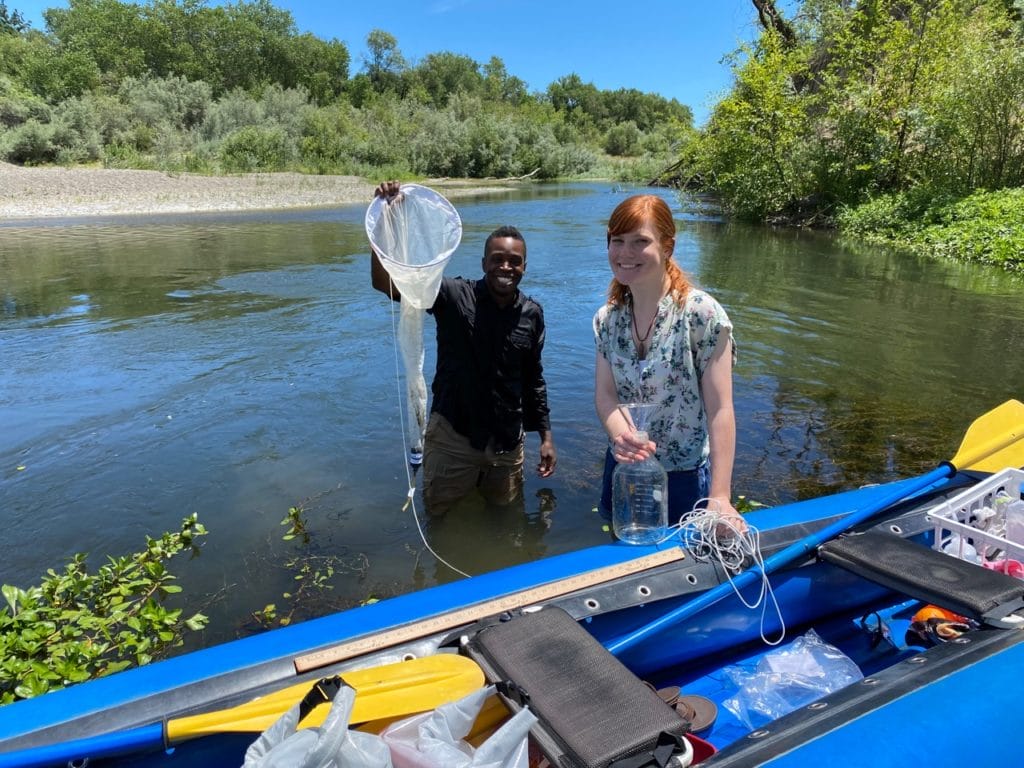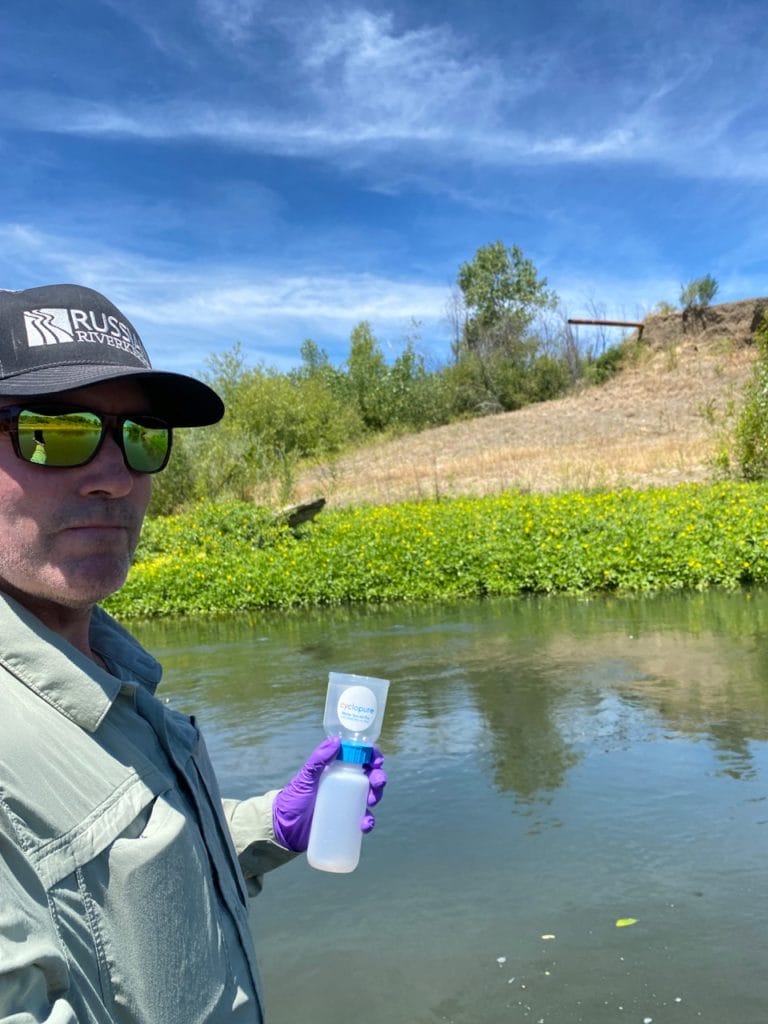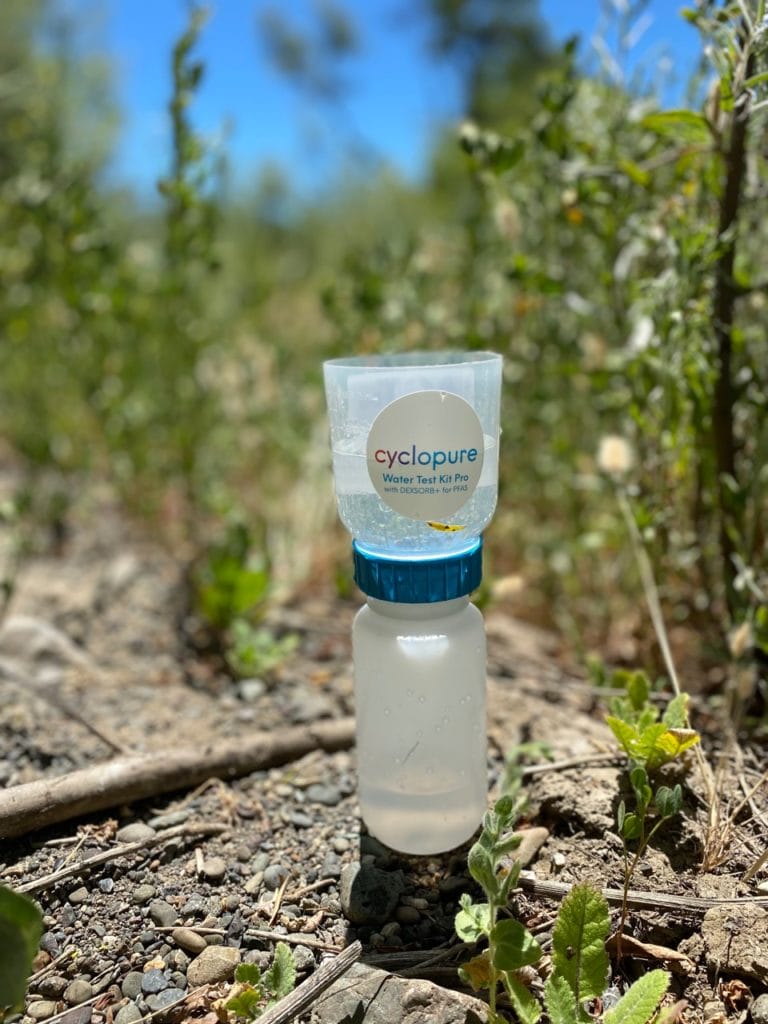Waterkeeper Alliance has recently organized a comprehensive PFAS contamination survey of watersheds in the U.S., and they asked all Waterkeeper organizations to participate. PFAS stands for per- and polyfluoroalkyl substances, which are persistent organic contaminants pervasive throughout water supplies in the United States. The Russian River provides water for agriculture, industry, and over 600,000 residents. We are very fortunate that this water is relatively free of pollution. As members of the global Waterkeeper Alliance, Russian Riverkeeper is an expert collaborator to keep our beloved river swimmable, drinkable and fishable.

PFAS have been manufactured since the 1940s and can be found in Teflon nonstick products; stains and water repellants; paints; cleaning products; food packaging; and firefighting foams. PFAS are “forever chemicals”; they persist in the environment for an extremely long time. Potential sources of PFAS pollution include industrial wastewater, landfill leachate, Waste Water Treatment Plant effluent, and contamination from the use of firefighting foams at airbases and airports across the country. PFAS are highly mobile in the environment and readily make their way to drinking water resources like surface water. Unfortunately, these compounds have been found to cause many health problems in humans, and they don’t belong in our water supply.

This will be the most extensive PFAS monitoring study conducted in the U.S., analyzing collection samples taken simultaneously in surface waters across the country. Waterkeeper Alliance (WKA) has sent us a convenient, easy-to-use PFAS water test kit developed by Cyclopure Inc. of Illinois. The testing site we’ve chosen is at an old gravel-mining pond adjacent to the river where the City of Healdsburg Water Treatment facility discharges its treated water. A 2019 flood tore away the levee that had separated this pond and now the treated water overflows directly into the Russian River. For our study, we sampled the water leaking from the treatment pond into the river. A second sample from the river upstream of the breach will be a comparison. We should get results published from the WKA study in August, and we will publicize our findings. For more information about PFAS you can visit https://www.epa.gov/pfas/pfas-explained
While organizing this study, Russian Riverkeeper was approached by local college researchers beginning a study on microplastics in our watershed. Catherine Kingsbury (chemistry student finishing SRJC, heading to UC Davis) and Dr. Manza Atkinson (chemistry professor from Sonoma State University) joined us mid-June to conduct water samples on the Russian River at a site of this potential source of pollution. The spot is remote, and we are very appreciative of support from Larry Laba, Joe Chatigny, and the rest of the crew at Russian River Adventures for getting us to the testing site efficiently. The researchers used a very fine mesh plankton net to take their water sample, and will take a closer look with microscopes and further laboratory analysis. They agreed to share the results of their findings with us and we will keep you informed.
To date, scientists have found microplastics in nearly every place they’ve looked, including pristine mountain springs, the arctic, and even human blood. These tiny pollutants come from a variety of sources: bits of car tires, larger plastics that break down over time, and one of the most ubiquitous types of microplastics polluting California’s waterways, microfibers.

Microfiber plastics are present in most synthetic clothing. Every time synthetic clothes are washed, upwards of 1.5 million microfibers can be released into the local wastewater treatment system. Microfibers are over 20 times thinner than the average strand of hair, allowing them to slip past wastewater treatment filtration and flow straight into our rivers and oceans. We can help prevent this by installing filters in the drain lines of our washing machines. For more information about microplastics please visit https://cacoastkeeper.org/cckas-solution-to-microplastic-pollution/, CCKA article by Cody Phillips, CCKA Policy Analyst.
